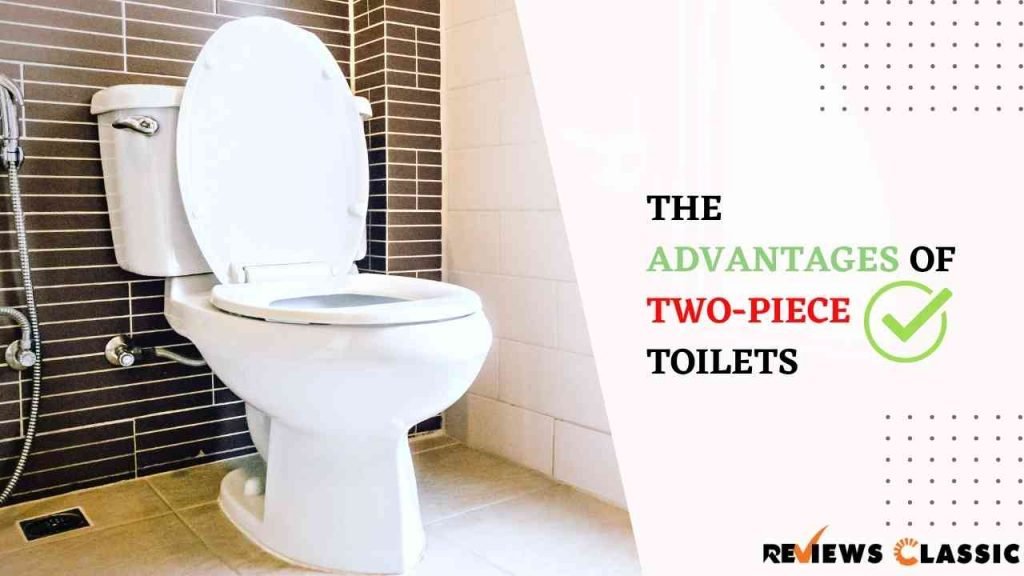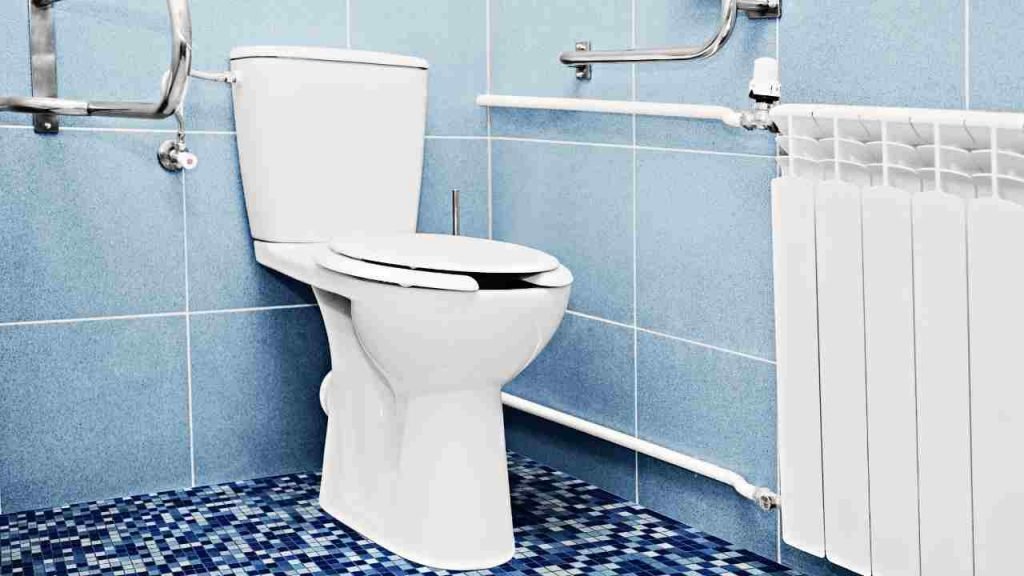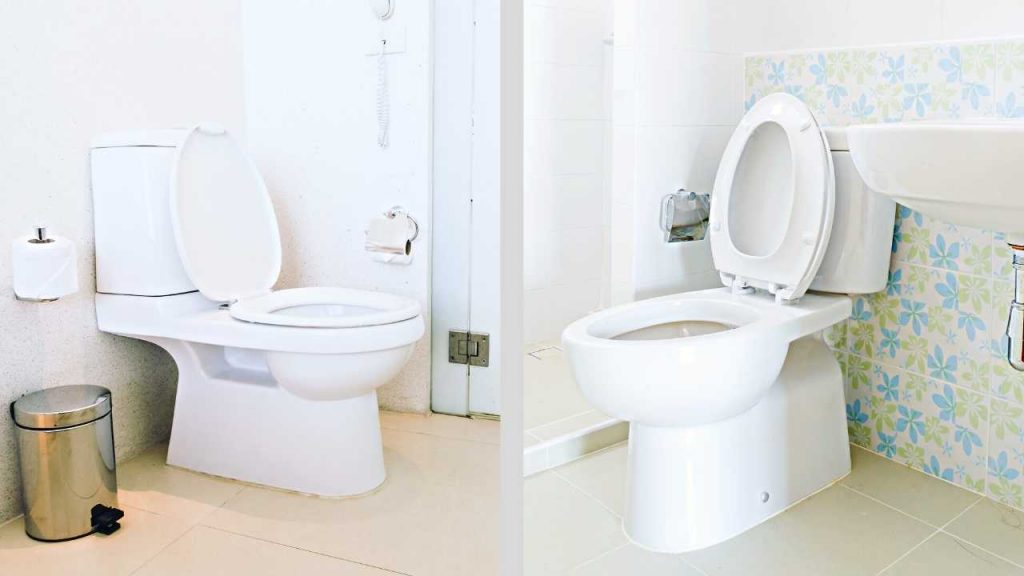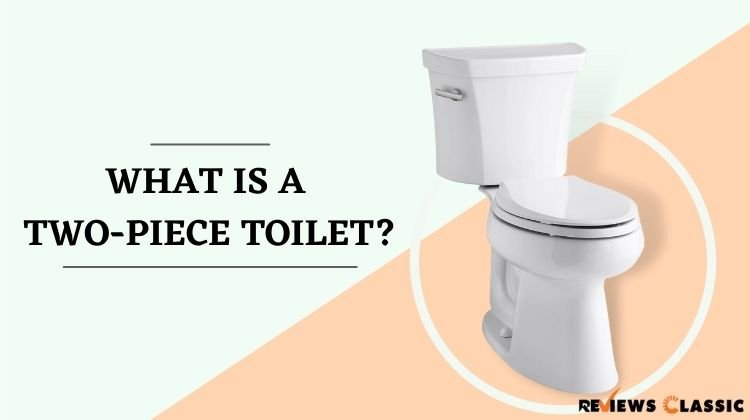What is a Two Piece Toilet? – Everything You Need To Know
There are different types of toilets in the market. Depending on your needs and considering other aspects, toilet manufacturers came up with ideas featuring various designs and construction. However, in terms of structure, there are two types of toilets –
- One-piece
- Two-piece
Now, what is a two-piece toilet? Basically, when the toilet tank and bowl are molded separately and attached through bolts, then it’s a two-piece toilet. In other words, because the toilet features two distinct sections, it is referred to as a two-piece toilet.
The most popular form of toilet in the United States is a two-piece toilet, as two-piece toilets are easier to handle and maneuver in confined spaces.
Now, if you are wondering about one-piece toilets, they are just one single unit. A one-piece toilet is cumbersome and can be very heavy. Also, these toilets are pricey compared to two-piece toilets.
Before going through all of that, let’s have some basic info about toilet’s key terms –
Toilet Bowl: The toilet component collects waste and routes it to your septic tank or local sewage system.
Toilet Tank: It’s a container that resides at the back. It retains water for flushing and provides pressure to the bowl to flush waste away.
The Pedestal: The pedestal is the base upon which your toilet is built, elevating the toilet above the ground.
Advantages of Two-Piece Toilets

The construction of a two-piece toilet basically makes room for specific advantages. For example –
It’s easy to install: The two-piece toilet is comfortable to install as you can deal with the tank and bowl separately. Moreover, two-piece toilets are lightweight, so a single person can quickly complete the entire installation process.
However, the only additional step is the assembling of the two components. Furthermore, when installing the two-piece toilet, you must avoid shattering the porcelain while connecting the bowl and tank.
Comparatively less costly: In terms of price, two-piece toilets cost less compared to one-piece toilets. It’s because two-piece toilets are easier to ship as the tank and bowl are separate and can be sent individually. Also, these toilets are lightweight. So, as the shipping cost is less, the market price is also comparatively lower. Moreover, depending on the model, two-piece toilets can be half the price of one-piece toilets!
Durability: The lifespan of a commode, whether it has a one-piece or two-piece construction, generally depends on the build quality of the toilet.
However, in terms of two-piece toilets, there is a positive note. If there is a fracture or damage in either the bowl or the tank, you can repair the damaged section. In other words, because the units in two-piece toilets are separated, you don’t have to replace the entire toilet.
Lightweight: As you know, two-piece toilets are lightweight. Standard one-piece toilets weigh around 80 to 120 pounds or 35 to 55kg, whereas two-piece toilets weigh approximately 60 to 100 pounds or 30 to 45 kg.
The weight surely increases since one-piece toilets support the ceramic tank during the manufacturing fire cycle.
What Are the Drawbacks of A Two-Piece Toilet?

Maintenance is complex: Two-piece toilets have a space between the tank and the bowl, making cleaning a little more complicated. A two-piece toilet’s junction between the tank and bowl may also wear away. The space that separates two units in a two-piece toilet also provides a breeding ground for bacteria and germs.
More likely to break/leak: As two-piece toilets have more moving components, more replacement parts are required when they are damaged. A two-piece toilet’s connection between the tank and bowl may fracture over time.
It means that the two sections might separate, necessitating the replacement of one or both components. Moreover, the rubber gasket between the two pieces of an old toilet may disintegrate, resulting in leaks.
Needs more space: Two-piece toilets are not compact in size, just like the one-piece construction. As a result, they may take up more space in a small-sized bathroom.
How to Install a Two-Piece Toilet?
Two-piece toilets have a classic design that includes a separate tank and bowl. Two- and three-bolt installation solutions ensure a solid, level connection between the tank and bowl, making installation simple. To install a two-piece toilet –
Tools: Ensure all the necessary tools that you will need to install a two-piece toilet. You will need the bowl, wrench, flat head screwdriver, tank-to-bowl bolts, and a rubber gasket.
Installing the Hardware:
- Insert the bolts with the rubber washer from inside the tank.
- Attach the brass washer and nuts to the bolts.
- Use a flathead screwdriver to hold the tank bolt in place from inside the tank.
- Tighten the brass nuts with an adjustable wrench and check to see whether the bolts are secure.
Attaching the gasket: Put the rubber gasket in place and make sure it is on tightly.
Tank to bowl attachment: Next, place the tank of your two-piece toilet on top of the bowl. Attach the oval metal washer and then the metal wing nut from underneath the bowl. To create a secure seal, tighten the wing nuts by hand and push down on the same side of the tank. Try to alternate sides until the tank is securely mounted onto the bowl.
Connect to The Water Supply:
- Once tank to bowl installation is completed, connect your water supply and turn on the supply valve.
- Let the tank fill completely until the float reaches the shut-off position.
- Inspect the fittings for leaks and tighten them if required.
Watch This Video
How Do Two-Piece Toilets Differ from One-Piece Toilets?

Regardless of toilet construction, there isn’t much difference between one-piece and two-piece toilets. One-piece toilets come with a single unit, whereas two-piece toilets are comprised of two units (tank and bowl).
For this difference, you will see there are specific changes in characteristics for both one-piece and two-piece construction. For example –
Maintenance: one-piece toilets are easy to clean as it eliminates those hard-to-reach nooks and crannies between the tank and bowl. Also, there are no difficulties with degrading gaskets and O-rings because there is no tank-to-bowl fitting to worry about. However, this is not the case with two-piece toilets.
Size and Weight: One-piece toilets are comparatively heavier than two-piece toilets. It’s because a compact single unit weighs much more than two separated units.
Shipping Cost: The shipping cost for one-piece toilets is a bit higher than for two-piece toilets. As you know, these single-unit toilets are heavier and more challenging to transport compared to two-piece toilets. Therefore it’s expensive to ship.
Price: Despite the shipping cost, single-piece toilets are also more pricey than two-piece toilets. The production process for one-piece toilets plays a crucial role here. In other words, a one-piece toilet is made up of multiple tiny components. It takes skill to fire and assemble all of the elements into one. Therefore, they cost more.
What Types of Two-Piece Toilet Bowls You May Find in The Market?
In terms of bowl shape, you will probably find three of them.
- Compact elongated
- Elongated
- Round Front
For added comfort, you can choose elongated two-piece toilet bowls. As they have space and are not compact, you will get enough space and comfort while using the toilet. Brands like American Standard offer many elongated two-piece toilet models with various styles.
You can also go for round-front bowls that take less space and are ideal for small children. These are also known as “plain bowls.”

